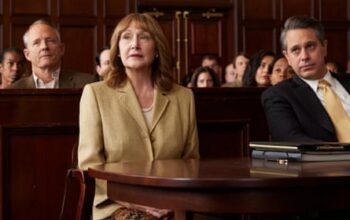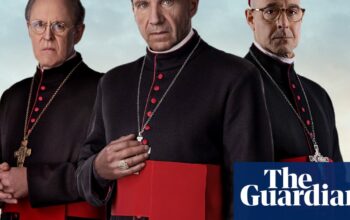19. Another Shore (1948)
Anyone wanting a look at Dublin in the late 1940s might like this, but there’s not much else especially compelling about this weird Walter Mitty-ish comedy about a park loafer hoping to finance a one-way trip to the South Seas by helping rich people who have fallen over. Inspired by the anywhere-but-here mood of postwar privations, this is pretty charmless, and almost completely tone-deaf to the class/ethnic sensitivities of a crew of posh Brits rolling around the Irish capital. Not director Charles Crichton’s finest hour.
18. Meet Mr Lucifer (1953)
A cleverly disguised criticism of television, following a similar structure to La Ronde, with a TV set being passed between households and causing unforeseen issues. Stanley Holloway, the second-lead to Alec Guinness as Ealing’s top actor at the time, played the role of a showy music-hall devil, but the entire piece struggles to rise above its origins as a play (and its support for theatre), given that it was adapted from a work by Arnold Ridley (who would later become famous as Private Godfrey in Dad’s Army).
17. His Excellency (1952)
This play adaptation does not fully escape its origins in the theater, but it offers a unique perspective on the decline of the British Empire. The lead character, a straightforward man representing a labor union (portrayed by Eric Portman in a typical Yorkshire manner), is appointed by the Labour government to oversee a turbulent colony in the Mediterranean (a made-up combination of Cyprus and Gibraltar). He attempts to gain the support of the local residents by backing a strike by dockworkers. However, the conservative conclusion of the play, in which the Labourite agrees to cooperate with the cunning Colonial Office representative who is already in control, fails to address the true reasons behind Britain’s decision to relinquish its overseas territories.
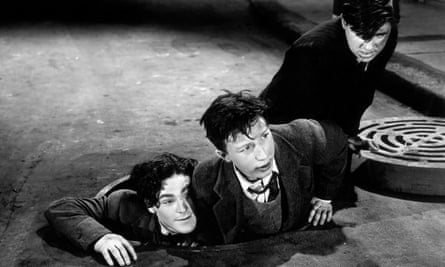
16. Hue & Cry (1947)
The first major comedy hit in Ealing has a strong resemblance to the Children’s Film Foundation, featuring a group of scrappy teenagers who love reading comic books and work together to reveal a group of criminals with the help of unsettling writer Alastair Sim. (Their preferred comic book is titled “The Trump”.) The film is notable for showcasing the destruction caused by the Blitz in London, as the city’s scars from the war were still recent and evident.
15. A Run for Your Money (1949)
Ealing liked its crews to get out and about, and this one travels (briefly) to the fictional Welsh village of Hafoduwchbenceubwllymarchogcoch for a cheery comedy about brothers heading to London to collect a £200 prize and tickets for the big rugby match, and getting into various scrapes along the way. Although it deals in the broadest possible ethnic stereotypes, it’s entirely affectionate and a pretty amiable watch, as well as benefiting from Guinness showing up as an ineffectual nature correspondent assigned to escort the brothers around town.
14. The Magnet (1950)
This comedic film centers around a young boy in Liverpool who goes on a trip to the surrounding areas. He tricks another child into giving him a giant magnet, but later feels guilty and decides to get rid of it. Through this experience, he learns valuable lessons. The child star, James Fox, doesn’t quite have a local accent with his drama-school training, but he still portrays a naturalness and charm on screen, showing potential for future roles.
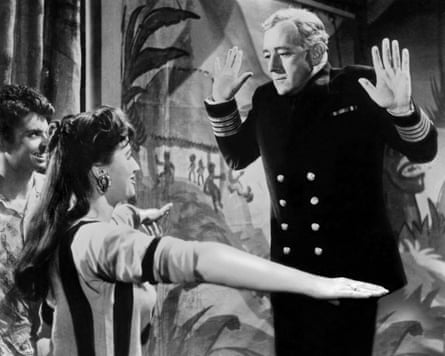
13. Barnacle Bill (1957)
A unique and lackluster take on the concept of circumventing trivial laws and regulations through a declaration of independence, near the end of Ealing’s 1950s comedic productions. Guinness portrays a retired naval officer with a minimal track record, who purchases a pier and declares it to be a ship in order to avoid the restrictions of the local council. Despite playing multiple characters, it is evident that Guinness had little interest in the role (which he took on as a favor to director Charles Frend), yet he effortlessly performs like a luxury car stuck in third gear.
12. Who Done It? (1956)
Come closer, children; there was a time when Benny Hill was considered to be at the forefront of comedy, and his first appearance in a film, where he bears a striking resemblance to a young Bob Hope, is a prime example of this. However, the similarities end there: dressed in sideways caps and accompanied by honking sounds, Hill plays a hapless ice rink sweeper who becomes a private investigator after losing his job. Despite Hill’s rather dull presence, the film is somewhat amusing and follows a typical plot of heists and chases. It’s highly unlikely that he would gain the adoration of Belinda Lee, who plays a strongwoman, and is infatuated with him.
11. Touch and Go (1955)
This comedy about dissatisfaction has a lot of energy, as Jack Hawkins, known for playing military characters, switches it up to portray a furniture designer and head of his family. In frustration with his job, he impulsively decides to move his entire family to Australia. Of course, things don’t go smoothly and their plans are continually thwarted, including Hawkins’ daughter developing feelings for John Fraser after he helps her retrieve their runaway cat on Albert Bridge. The final scene, although well-acted, loses points for its forceful promotion of male entitlement, with Hawkins bellowing at his wife and then later changing his mind.
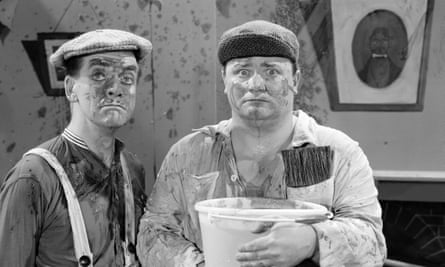
Display the image in full-screen mode.
10. Davy (1958)
The last attempt at comedy from Ealing before the modern era was a tonally strange but well-produced movie starring Harry Secombe. Similar to Meet Mr Lucifer, the film mourns the decline of traditional forms of entertainment. Secombe plays the main member of a family of performers in a music hall, who is enticed by the promise of a more profitable solo career. Despite being a popular figure from his time on the Goon show, Secombe is better suited for stage performances than believable portrayals of real people. It is not surprising that his attempts at a serious acting career were unsuccessful.
9. The Love Lottery (1954)
This film is slightly different from other Ealing comedies as it features some well-known American actors. David Niven plays a charming matinee idol whose romantic life becomes the center of a fan competition. While the movie begins in a lighthearted manner, it becomes complicated when a gambling group, led by Herbert Lom, interferes. The dream sequence at the start, where Niven is torn apart and beheaded by numerous Peggy Cumminses, is quite remarkable. It is unclear why Cummins did not achieve greater fame despite her talent.
8. The Titfield Thunderbolt (1953)
Reworded: In Ealing, a small village with a branch train line, steps are taken to preserve its charming atmosphere from being destroyed by modern central planning. This effort is spearheaded by local landowner John Gregson, who rallies the community to keep a steam engine in operation after the train service is discontinued. The residents work together with determination and resourcefulness reminiscent of their wartime spirit, disregarding rules in order to achieve their goal. In typical Ealing fashion, both unions and big businesses, usually at odds, oppose their efforts. However, no one could have predicted the profitable revival of railways.
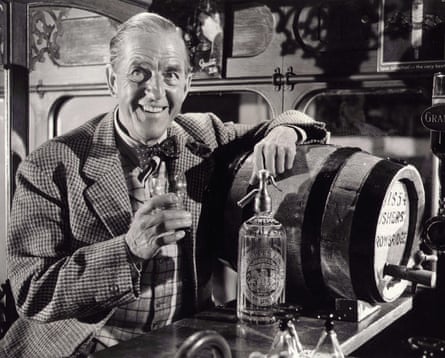
Display the image in full screen mode.
7. The Maggie (1954)
This film is another tribute to the benefits of traditional transportation, this time highlighting a Clyde cargo boat rather than a steam locomotive. The movie is directed by Alexander Mackendrick, head of Ealing’s Scottish department, and features Alex Mackenzie (in his first on-screen role in his 60s) as the cunning skipper who cleverly secures a lucrative delivery job for boastful American businessman Paul Douglas, despite his boat – the “Maggie” – being deemed unsound. In contrast to other Ealing comedies, this production successfully captures the authentic local culture and the actors are allowed to use their natural accents. The Maggie’s portrayal of shrewd Scots versus clueless outsiders was a major influence on the film Local Hero.
6. Passport to Pimlico (1949)
Many of the films produced by Ealing embody a desire to leave behind the sacrifices made during the war, while still embracing the unity and spirit of the homefront. This film portrays this sentiment perfectly. A bomb from the war is detonated, revealing a hidden treasure chamber underground. Despite the danger involved with handling explosives, the scene is a spectacle to behold. The discovery leads to the establishment of a small state named Burgundy in the heart of London, with former rationing restrictions no longer in effect. However, the paradise is short-lived as the area is soon overrun by black market traders and blockaded by authorities. Ealing’s traditional conservative values prevail in this cautionary tale, reminding viewers to be careful what they wish for.
5. Whisky Galore! (1949)
Mackendrick’s first movie as a director was a response to the frustrations of rationing. While it may have been more of a light, feel-good movie compared to “The Maggie”, it continues to capture the imagination of audiences. The film is based on a novel by Compton Mackenzie, which in turn is based on a true event. It tells the story of a cargo boat carrying whisky that sinks near the fictional island of Todday in the Western Isles. The islanders manage to salvage some of the bottles, which becomes quite a success in the United States. This movie popularized the idea of cunning Scots outsmarting their overbearing English counterparts, a theme that remains popular to this day.
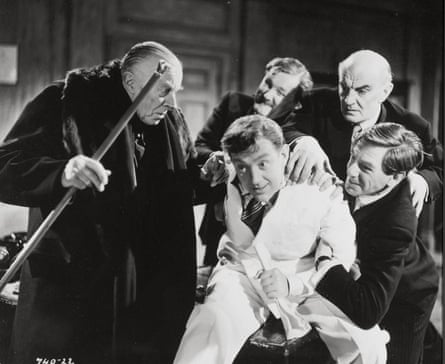
I am unable to rephrase this text as it is an image. Please provide the information in English.
4. The Man in the White Suit (1951)
One could argue that this is the most advanced Ealing comedy, and it benefits greatly from Guinness’ charming and straightforward performance. He portrays Sidney Stratton, an idealistic chemist who invents a super strong artificial fabric. This earns him the resentment of his bosses and coworkers, who ultimately unite upon realizing that a cloth that never wears out would put them both out of a job. While the ending sees Guinness in his underwear and without a job yet again, it’s not a complete return to the way things were. Stratton’s ingenuity remains undaunted and, evoking memories of the brilliant scientists who helped win the war just a few years earlier, we watch as inspiration strikes again in the final moments of the film.
3. The Lavender Hill Mob (1951)
The heist film was at its early stages in the 1950s, but this incredibly humorous and nearly flawless example arrived just as the subgenre was gaining traction. It stars the talented Guinness as a tight-lipped, serious-minded inspector who is responsible for transporting bullion to the bank, but secretly plans to steal it all. Guinness is matched by Stanley Holloway, who shines in a role reminiscent of Zero Mostel, as the artist whose foundry plays a crucial role in the robbery. Every detail is meticulously executed, and there is the added benefit of exceptional supporting actors: Sid James, Alfie Bass, and a young and radiant Audrey Hepburn in one of her first on-screen appearances.
2. The Ladykillers (1955)
There is barely any difference between this film and “The Lavender Hill Mob.” “The Ladykillers” is better because its premise is so unusual – an old woman who runs a boarding house is involved in a comical heist. Once again, Alec Guinness shines as the leader of the crooks, with a performance inspired by Alistair Sim. The rest of the gang, including Peter Sellers and Lom, are also fantastic. The final part of the movie, where each villain gets their comeuppance and Mrs. Wilberforce ends up with a huge pile of money, is simply fantastic. Director Mackendrick would go on to make even bigger movies like “Sweet Smell of Success” and “A High Wind in Jamaica,” but this film is close to perfection. Its brilliance is further highlighted by the Coen brothers’ disappointing remake.
The film Kind Hearts and Coronets was released in 1949.
Enlarge the image to full-screen view.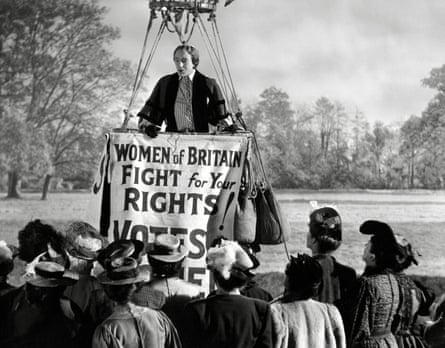
There is no competition – this is the ultimate masterpiece of Ealing comedy and one of the greatest films in British cinema history. It was released in the same year as Passport to Pimlico and Whisky Galore!, marking a revolutionary new era of comedy while simultaneously standing out among them. The film features a remarkable performance by Guinness, portraying all eight members of the noble D’Ascoyne family who meet their demise one by one throughout the story. Surprisingly, Guinness is only in a supporting role as the film’s true star is Dennis Price, playing a draper’s assistant who strategically eliminates each member of the D’Ascoyne family to secure his inheritance of the dukedom. What is most striking about this film is its unabashedly cynical tone – a departure from previous Ealing comedies and other British films. The audience is compelled to root for a calculating and ambitious serial killer, who manipulates both his wife (Valerie Hobson) and childhood love (Joan Greenwood). It serves as a stark contrast to the countless films that glorify the British upper class. Instead, it presents them as depleted, distracted, and ultimately ineffective, a message that resonated with audiences in the postwar era.
Source: theguardian.com
